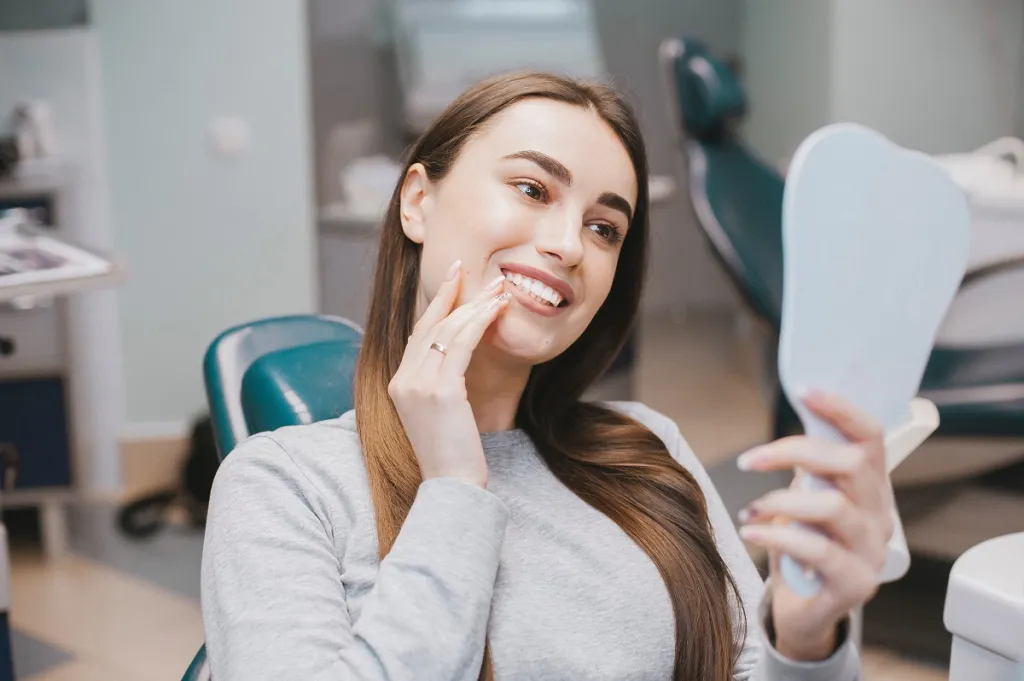With the right cosmetic treatments, your dentist may be able to help you correct tooth discoloration and renew the whiteness of your smile. However, the effectiveness of these treatments will depend on whether the stains are extrinsic or intrinsic. Read on to find out more.

Understanding Tooth Discoloration
Tooth discoloration can generally be classified as extrinsic or intrinsic. Extrinsic dental stains are usually brown or yellow. This discoloration originates on the tooth surface and is often a result of external factors such as lifestyle and eating habits. For instance, you can develop yellow teeth if you smoke cigarettes, chew tobacco, or frequently drink dark beverages like soda, red wine, coffee, and tea. Treatment options for extrinsic dental stains include professional teeth whitening services, dental bonding, and porcelain veneers.
On the other hand, intrinsic dental stains originate from within the teeth and vary from yellowish or brownish discoloration to gray or white stains. Common causes of intrinsic stains are injuries, excessive use of certain antibiotics, too much fluoride, and genetics. Treatment options for intrinsic dental stains are dental bonding, porcelain veneers, and porcelain dental crowns. Professional teeth whitening is not effective at correcting intrinsic dental stains.
Yellow Stains and Possible Solutions
If you have yellow stains or discoloration on your teeth, several factors could be to blame. In order to choose the best treatment to revitalize your smile, it’s best to understand the root cause of the problem.
Besides genetics, foods, drinks, and lifestyle habits, other causes of yellow tooth discoloration include:
- Exposed dentin – As your enamel wears out and becomes thin, it reveals the dentin beneath. This deep yellow to brownish material gives your teeth a yellow tint when exposed by weakened enamel.
- Tooth Grinding – Unconscious teeth grinding, especially while asleep, is another possible cause of yellow teeth. Commonly known as bruxism, this condition can weaken your enamel and cause yellow discoloration. It can also make your teeth more susceptible to damage and decay.
- Fluorosis – Excessive fluoride exposure can cause yellow spots on the surface of the teeth called fluorosis. Common sources of fluoride are fluoridated water, prescription fluoride tablets, and fluoride toothpaste. It’s a good idea to consult with your dentist to ensure your getting the ideal amount of fluoride.
Your dentist will conduct a thorough exam to uncover the root of your tooth discoloration. Then, they’ll be able to formulate a treatment plan to whiten your smile and address any underlying health issues that are causing yellow tooth stains. If teeth whitening isn’t an option for you, your dentist may recommend porcelain veneers, dental bonding, or crowns. It all depends on what works best for your unique needs.
Keep Your Teeth White and Healthy
Everyone wants to have white, strong, and healthy teeth, but certain conditions that may be out of your control can make this difficult to achieve. Whether your teeth are yellow due to genetic reasons, dietary habits, injuries, or underlying health conditions, a trusted dental professional can help you find a solution.
The post What Causes Yellow Teeth? first appeared on Dental Signal.
